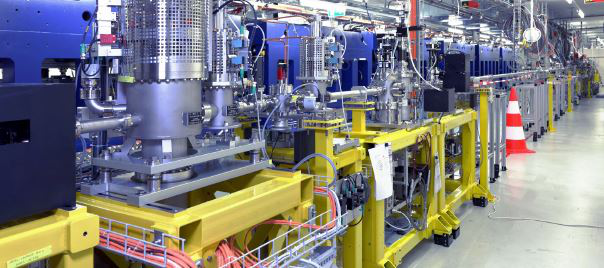Speaker
Description
1. General information
X-ray free electron lasers (XFELs) pave the way towards new and highly exciting experiments in the fields of X-ray imaging and spectroscopy [1,2]. They allow accessing ultrafast and non-linear processes on the nanoscale. However, the stochastic nature of the lasing process causes strong shot-to-shot fluctuations in intensity and spectral composition, which represents a challenge for many experiments in terms of signal normalization. Thus, accurate detection schemes with high correlation between the signal and a reference beam are necessary for normalization purposes to ensure good data quality in experiments that rely on the use of multiple pulses from an XFEL, such as spectroscopy and pump-probe experiments.
2. Methodology
For addressing this challenge, we have designed a new type of X-ray optic that combines the beam splitting functionality of a transmission grating with an off-axis zone plate [3]. This design not only overcomes the disadvantages of two individual optical elements, but introduces the beam splitter as a perfect phase grating, which can be implemented in a defined way to adjust the beam splitting efficiencies for certain diffraction orders precisely.
The grating can be added in two ways either by inverting the zone structure with a certain duty cycle or by shifting the zone structure by a certain factor.
3. Results
We characterized such multi-focus zone plate optics at the SIM beamline at the SLS and they enabled us to conduct the first user experiment at the Spectroscopy and Coherent Scattering beamline at the European XFEL. Here, the overlaid inversion grating generated two intense spots in the focal plane, where one interacted with the sample whereas the other one was used as a reference. In this way, we were able to measure an X-ray absorption spectrum from Ni and NiO thin films at different fluence levels with precise normalization on a shot-to-shot basis. The normalized spectrum showed a clear signal over noise improvement. These results demonstrate the capabilities of such compound optics to enable advanced experiments at XFELs.
Acknowledgements
We would like to thank everyone involved in the open community proposals No. 2161 and No. 2170 at the European XFEL. This work received funding from the EU-H2020 under grant agreement No. 701647 and No. 654360 NFFA-Europe.
References
[1] P. Emma, et al. Nat. Photon. 4(9), 641–647 (2010).
[2] E. Allaria, et al. Nat. Photon. 6, 699–704 (2012).
[3] F. Döring, et al. Optica 7 (8), 1007-1014 (2020).

